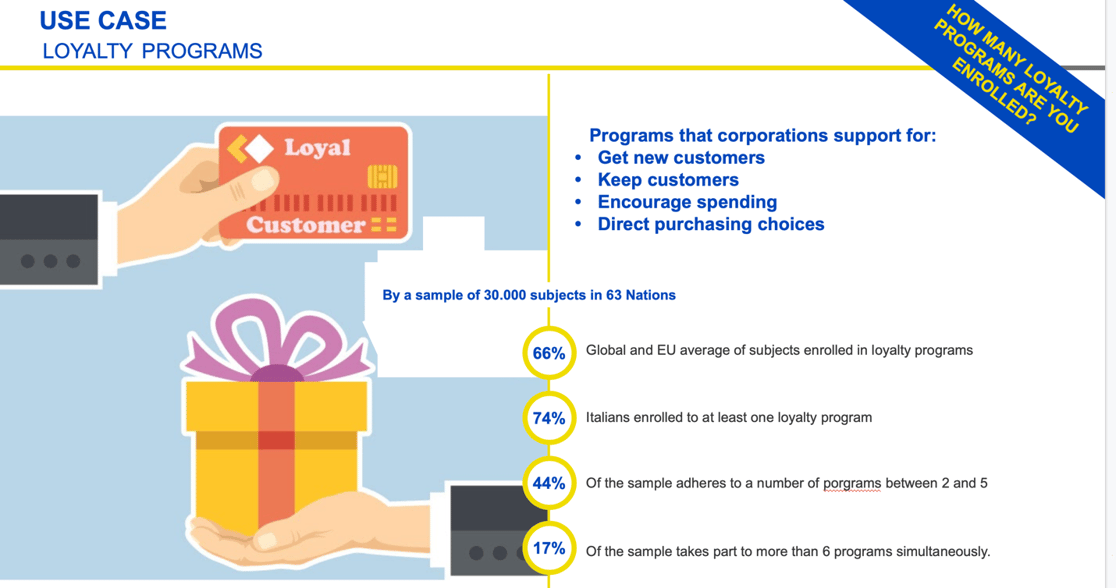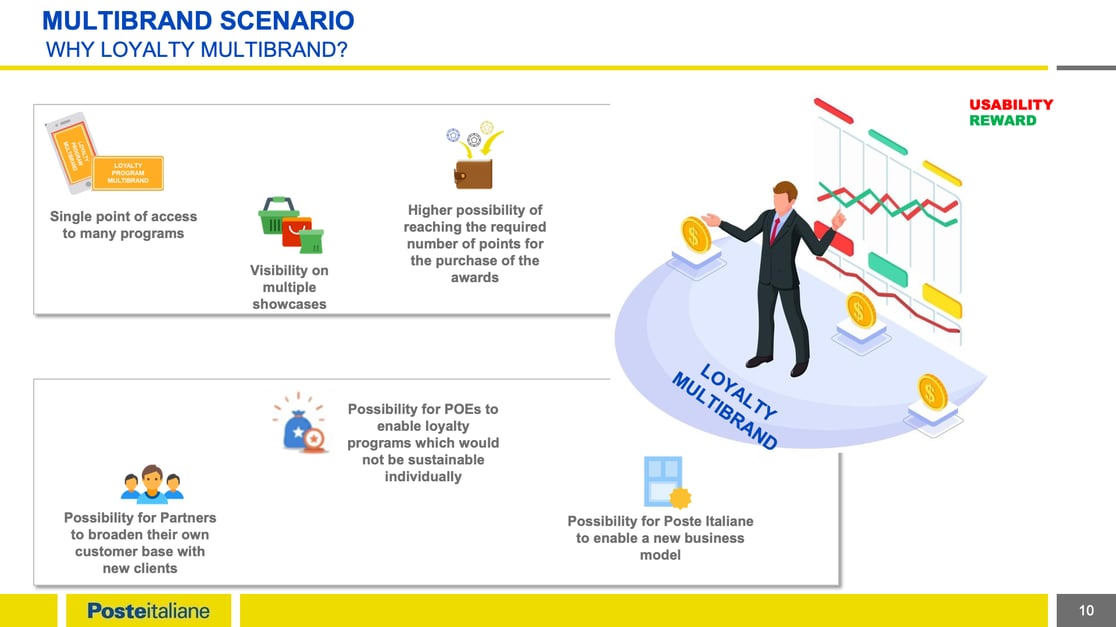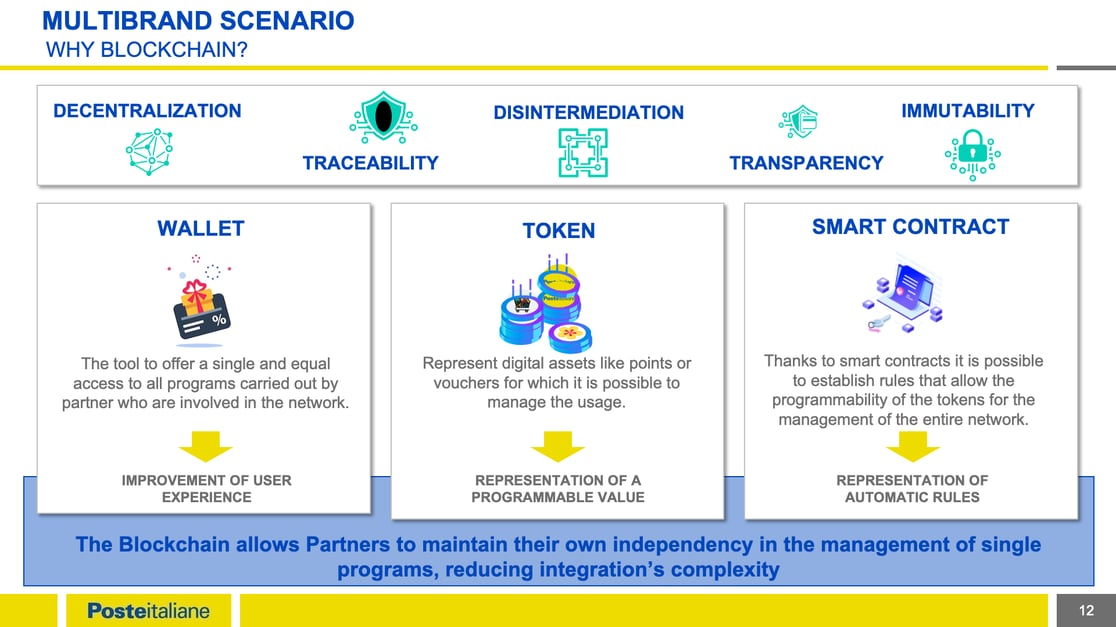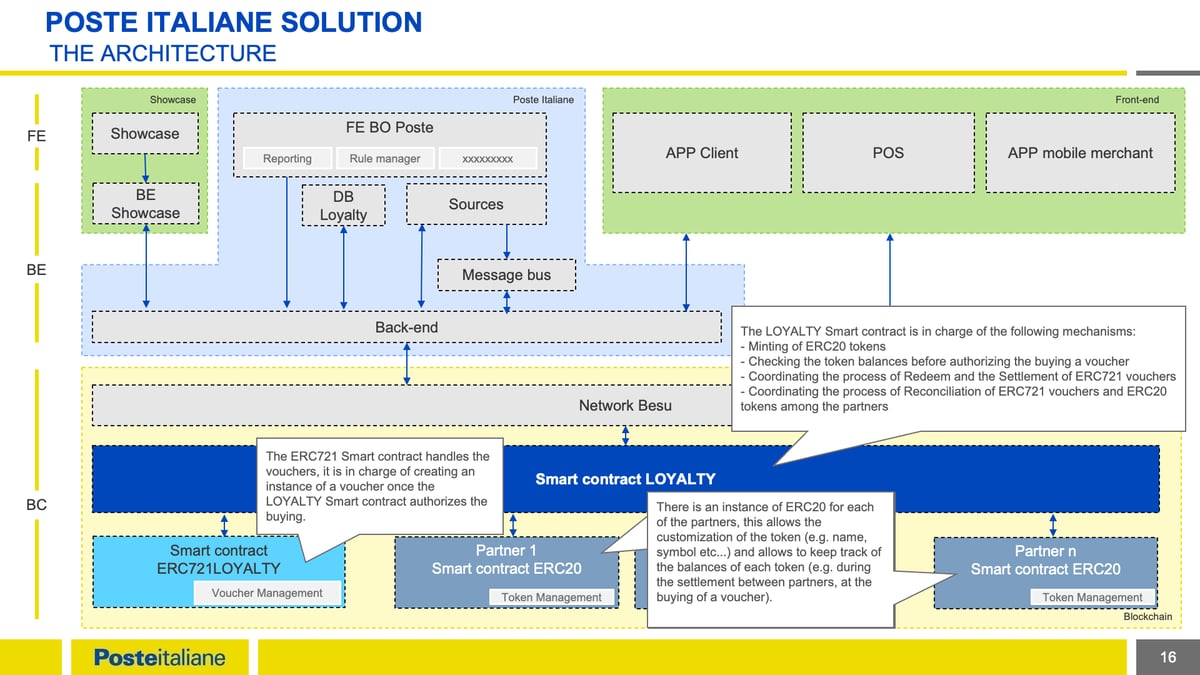How Poste Italiane brings value to loyalty with Hyperledger Besu

Poste Italiane, the Italian postal service, is one of the country’s oldest and biggest organizations with a role that extends well beyond mail and package delivery. Today, Poste Italiane is not just mail delivery but an online marketplace. The Poste Italiane website offers financial products, logistics and insurance services as well as online payments to facilitate track and trace throughout Italy. With 158 years of history, a network of more than 12,800 post offices, a workforce of 126,000, total financial assets of €536 billion and 35 million customers, Poste Italiane is at the center of Italian commerce.
To keep its central place in an ever-changing world, Poste Italiane prioritizes innovation to support new products, processes and customer experiences.
“The only way to stay in the market is to adopt and innovate, so creating a DLT project within our ICT innovation Strategy office was natural. Poste Italiane needs such solutions to support new initiatives and offerings such as currency management, welfare services’ awards management and loyalty programs extendable also to the Public Administration.”

A Deloitte Research Report, “Making blockchain real for customer loyalty rewards programs” found that using blockchain technology can help build brand loyalty by delivering real-time updates, facilitating tracking of goods, providing security & reducing costs.
According to the Colloquy Loyalty Consensus Report market research shows that “55% of consumers spend higher amounts and increases purchase frequency due to loyalty initiatives.” This makes developing a loyalty rewards program a revenue driver for brands in today’s online economy.
The Poste Italiane Group—with its banking services, partnership with merchants and logistics across a wide supply chain—sits in the middle of the loyalty ecosystem.
Poste Italiane began working with the loyalty programs in 2017 when, in partnership with SIA, it created the Extra Sconti App that enables cost savings to debit card holders that also use Postepay cards. Instead of starting with a network of big shops, it created a platform called Sconti BancoPosta that initially served over 30 thousand small merchants and soon grew to other well-known brands. The cashback system rewards users with money deposited directly into their account for purchases of brands recommended by the app.
“The reality is that it is seven times more expensive to acquire new customers than retain existing ones, and over half of us are motivated to spend more and increase the purchase frequency due to loyalty initiatives,” Vernini shares.
As the center of commerce & online transactions, Poste Italiane wanted to support the companies within their supply chain with customer acquisition and retention. They also wanted to encourage customers to engage with the merchants and follow their recommendations or accept offers through them.
Poste Italiane saw this as a big opportunity in the market. The traditional postal system is bound together by an expansive and complex supply chain. This results in tech sprawl where there are way too many programs and they are not interoperable. This means the programs can’t communicate with each other and share data. With the plethora of programs and lack of interoperability between them, the management of the accounts and the rules on earning rewards are not clear. What makes Poste Italiane’s service delivery platform stand out is the creation of a single point of access to multiple loyalty schemes and formation of a loyalty point exchange.
Building a customer loyalty program based on blockchain
It is common for customers to log into an airline miles/rewards account only to see they’re 100 miles shy of a travel reward. The Poste Italiane solution lets customers combine points from different programs to reach the threshold required to purchase the rewards, making it a truly customer centric approach. When customers only accrue points with one merchant, the value of those points are limited. Loyalty becomes much more worthwhile when the points can be bundled together so that they become interchangeable and benefits can be drawn from many places. With more points compiled, consumers can take advantage of more rewards. In a way, one can think of Poste’s loyalty points as a shop-issued digital currency where exchange rates set by the participating merchants.
The blockchain platform developed by Poste Italiane is fully decentralized with each partner running its own node. If a partner does not have the technical or financial capabilities, or interest in hosting one themselves, Poste Italiane can provide a node that the partner can manage. Because each partner needs to either contribute their hardware or pay for a node to be run on their behalf, everyone has vested interest and shared responsibilities to create a healthy ecosystem. Blockchain levels the playing field for everyone in the Poste Italiane network. Merchants get access to a complete loyalty service, including the ability to set up new campaigns and provide points and loyalty rewards to clients.
Without blockchain’s distributed ledger structure, a loyalty program typically reconciles on a periodic basis. With blockchain technology, customers can compile their points in real-time for more immediate rewards.

Enhancing the User Experience
Customers can easily access their accounts and rewards, via a mobile app provided either by Poste Italiane or any of the partners and set up their account. After accepting the terms and conditions, a new wallet is generated. Upon joining, each new user receives a welcome bonus and can start exploring the multi-brand marketplace. Whenever they want to use their rewards, they can create a voucher that combines points from various programs and is redeemable in the system. The collection of points is also digital – the user can generate a QRcode that represents their wallet address where the partner and merchants can transfer the points. While having a single platform makes it convenient for consumers, they can still use the designated apps from various merchants and use the Poste Italiane app to transfer their points and convert them into loyalty tokens on the platform.
Poste Italian’s system uses blockchain in three ways:
- Digital wallets
- Tokens
- Smart contracts

“Basically blockchain was the only way we could provide a truly exceptional user experience. For the merchants, we could combine different loyalty programs, while letting the providers maintain their independence yet interoperate with each other. For the clients, we provide a single point of interaction where they fully control how many tokens they have and how can they use them.”
Making consumer rewards a reality with Hyperledger Besu
Would it be possible to create the system without blockchain technology? Absolutely. However, there are many ways in which Hyperledger Besu makes the platform much better. From the partners’ perspective, they maintain their independence in management of their programs, reducing the integration complexity. From the consumer side, a mobile wallet improves the experience by offering a single point of access to all programs carried out by partners who are participating in the platform. The technology also delivers data in real-time, which leads to easier access to rewards for consumers.
Points, vouchers and any other assets that consumers collect through the partner programs in the Poste Italiane app get converted to loyalty tokens. This way, all are equal and can be moved seamlessly between partners. Thanks to smart contracts, it is possible to establish rules that allow the programmability of the tokens for the management of the entire network. Any transaction, be it earning points, exchanging them for tokens or purchasing a reward, happens through a smart contract. Using smart contracts makes the system much more trustworthy and transparent.
To enable interoperability, each loyalty point, regardless of the program it was earned through, is represented in the system by an ERC20 token. When consumers decide to redeem the rewards, they convert a certain number of the LOYALTY Tokens into an ERC721 token, which represents the vouchers. Partners can define their own set of conversion rules and exchange rates, and write it into their instance of ERC20, allowing for customization of the token and tracking balances of each token. The LOYALTY Smart Contracts coordinate minting the tokens, redemption and settlement of the vouchers, and reconciliation of the ERC721 vouchers and ERC20 tokens among the partners. The creation of vouchers after the LOYALTY Smart Contract authorizes the purchase is handled by an ERC721 Smart Contract.

“We tried comparing our approach with the tourism industry where multi-brand programs are not unusual. However, they are all very centralised. On the other hand, in retail some models exist, and they are very centralized as well. Blockchain was an enabler to create a decentralized, traceable, transparent and immutable solution for us.”
The idea to create a loyalty platform came from Poste Italiane’s interest in using DLTs as a single source of truth and proof of authenticity on information, as well as drive to experiment with tokenization. This use case was a great POC to test automated reconciliation between services where Poste plays an intermediary role. Out of many DLTs, they decided to build the POC using an Ethereum network. While the possibility of running their platform on a public blockchain was a factor, it was even more important to be able to connect to a permissioned system.
The development started with Quorum from ConsenSys. However, quite quickly, the team decided to move to Hyperledger Besu “because we are part of the Hyperledger Family,” jokes Vernini. “We had good reasons to become part of this family, though.
“For any big, public company, vendor independence is a must. In Hyperledger, we had that but combined with massive support from the user and developer communities and many enterprises to partner with. We also expect to contribute back, so the open-source nature of Hyperledger was important as well.”
Hyperledger Besu offers users the benefit of connecting Hyperledger and Ethereum. With Hyperledger Besu, organizations can easily configure Ethereum according to their needs while enabling smooth integration with other Hyperledger projects.
What is left, as Verninini admits, is probably the toughest part: moving from an internal Proof of Concept (POC) to a national production platform. “Blockchain projects like this require a completely different mindset and an openness to innovation and collaboration, even with your competition. Lack of education, fear of complicated technology, no clear Return on Investment (ROI) calculations and bringing in players outside of your organizations are the main obstacles.”
Nevertheless, Poste Italiane’s appetite for expanding their DLT usage is growing, and the loyalty platform is not the only project underway. “We are now working with other Italian public agencies and organizations to build an Italian blockchain infrastructure that could be fully interoperable with the EBSI infrastructure that is under development by the European Blockchain Partnership,” shared Rosario De Chiara, Project Manager at Poste Italiane. “We will be building a platform that will enable Italian companies to connect to EBSI. Once again we will be using Hyperledger Besu.”
About Poste Italiane
Poste Italiane is the largest infrastructure in Italy and is active in the areas of post and logistics as well as in financial and insurance services. With its 158-year history, a network of more than 12,800 post offices, a workforce of 126 thousand, total financial assets of €536 billion and 35 million customers, Poste Italiane is an integral part of Italy’s economic, social and productive fabric, occupying an unparalleled position in the country in terms of size, recognisability, reach and customer loyalty. Additional information can be found at www.poste.it
![]()
About Hyperledger
Hyperledger is an open source effort created to advance cross-industry blockchain technologies. It is a global collaboration including leaders in banking, finance, Internet of Things, manufacturing, supply chains, and technology. The Linux Foundation, the nonprofit organization enabling mass innovation through open source, hosts Hyperledger. The Linux Foundation also enables a worldwide developer community to work together and share ideas, infrastructure, and code. To learn more, visit https://www.hyperledger.org/
Sign up for Hyperledger Horizon & /dev/weekly newsletters
By signing up, you acknowledge that your information is subject to The Linux Foundation's Privacy Policy